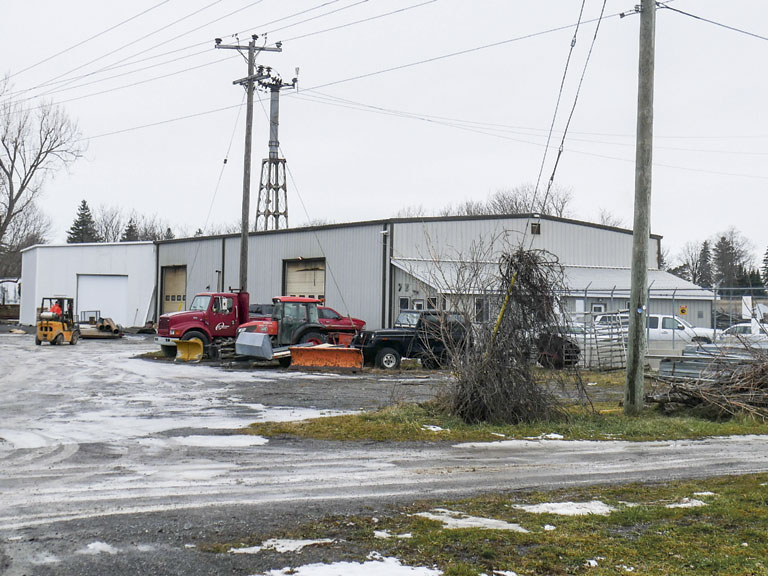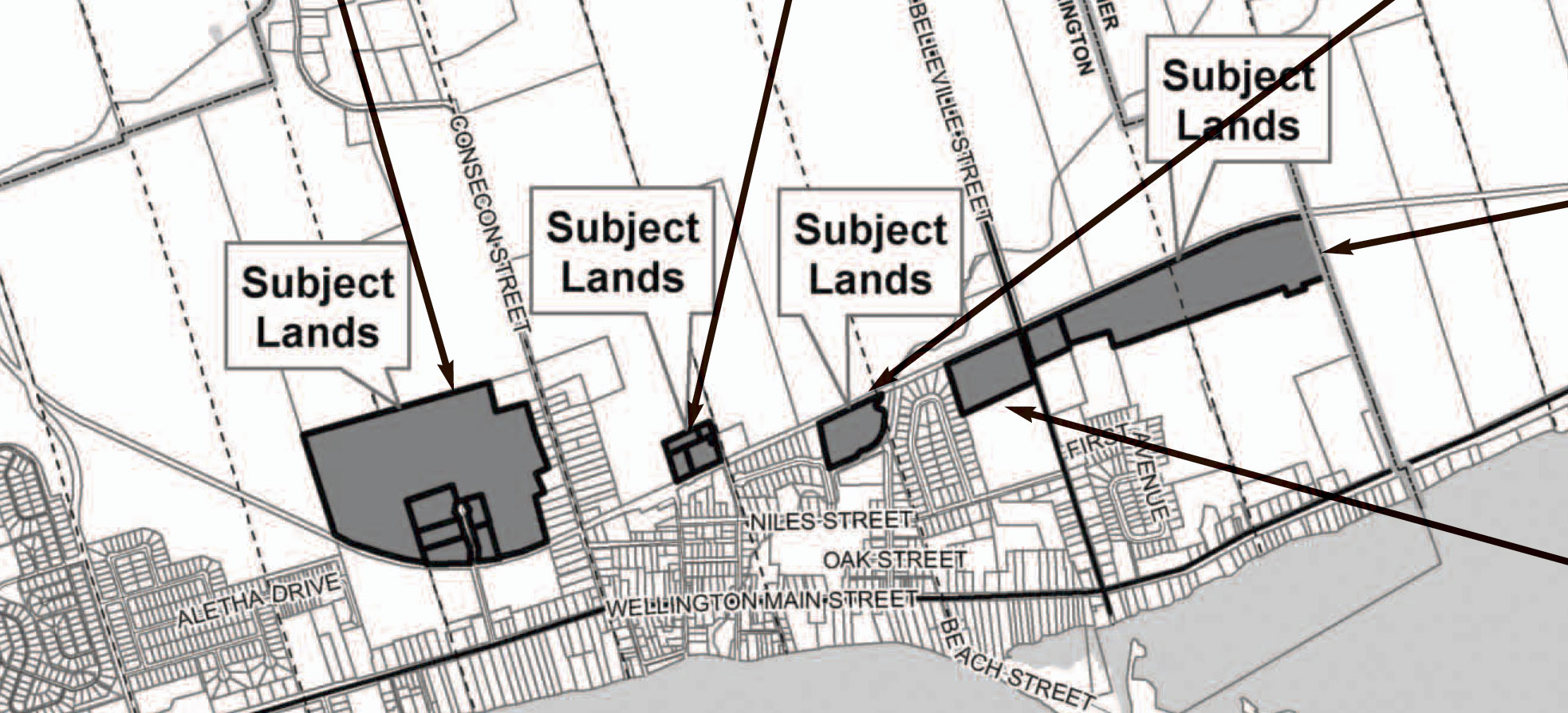County News
Freeze

Council buys a year to figure out how to reconcile Secondary Plan with existing uses
At its final sitting in 2016, County council passed a bylaw that, in effect, freezes for a year, any building or development on five clusters of properties on the northern edge of the village of Wellington. Each of these properties is currently zoned for manufacturing or industrial use. All border the Millennium Trail.
The issue arises from the newly updated Secondary Plan that governs development and growth in the village. Four of the five clusters have been identified in the Secondary Plan for development of residential homes or apartments. One portion—the most easterly—is vacant and is currently the subject of a Hold symbol—meaning certain steps must be taken before a building permit may be issued on this land. The most westerly cluster—at the end of Cleminson Street—will likely to remain zoned in a way that is consistent with its current activities.
The three other clusters of properties in between are in a slightly more precarious position. One is located at the end of Wharf Street, the other at the end of Maple Street and the third is across from the Wellington and District Community Centre. They house a metal fabricating business, a moulding manufacturing and a machining business respectively.
None of these businesses will be permitted to expand its existing footprint for a year as council decides how to reconcile the current use of this land and the aspirations of the Secondary Plan.
“The Interim Control Bylaw will allow the existing land uses to continue but permit the time required for the County to study and potentially enact regulations respecting the use of identified employment lands,” states the report prepared for the December 20 council meeting.
Though the Interim Control Bylaw may only be imposed for a year, it may be extended for another year.
In the meantime, council will have to make some difficult decisions. If it rezones these properties, existing owners may feel boxed in and see growth prospects restricted. Canadian law, however, gives the municipality well-established authority to change this zoning without any compensation to the landowners.
On the other hand, to ignore the freshly minted Secondary Plan would put Council direct conflict with every other builder, developer and homeowner seeking to sidestep its provisions. It would be cited as a precedent in every appeal of the Secondary Plan thereafter.
County works chief Robert McAuley says there is no intent to push these businesses off their land, but rather to limit expansion on these properties. He notes that in similar situations existing businesses have remained in place for many years.
He says the land will likely be rezoned as residential, but the business will continue as a nonconforming use.
“Eventually circumstances change: either the business finds it needs to expand or ownership changes prompt a move,” said McAuley. “That is how these type of issues are typically resolved.”


is this just another way to control business in the county from moving ahead